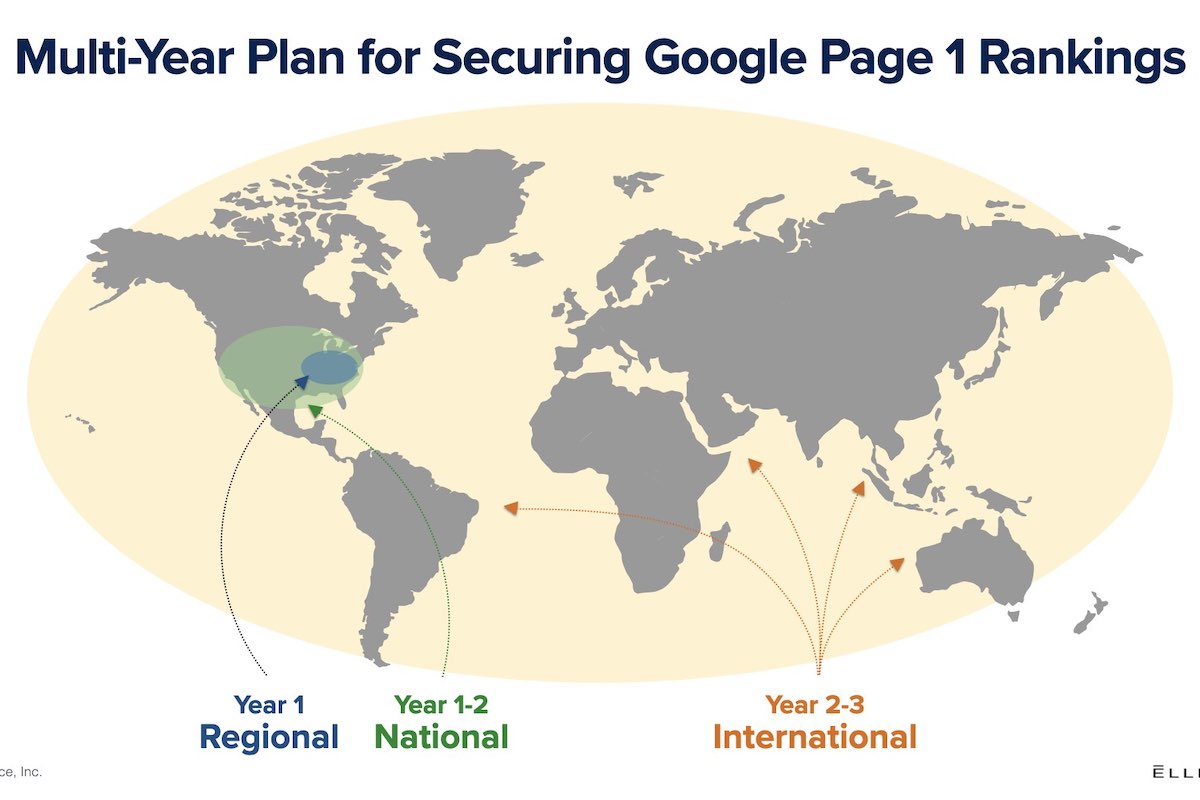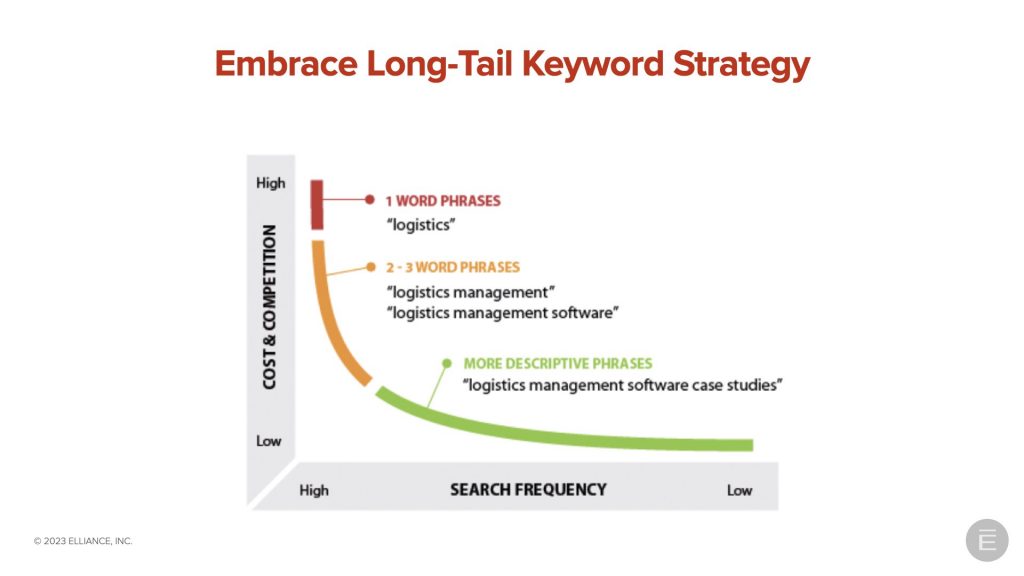| Nov 22, 2023
Manufacturing SEO Agency Shares Its Best Practice – Creating an SEO Strategy

As a leading manufacturing SEO agency, we are frequently asked to share our best practices. This is part 1 of a series of posts to explain how SEO works for manufacturers.
SEO or “search engine optimization” is the process of improving your website to increase its visibility on Google, Bing and other international search engines.
Manufacturers that pursue and achieve top organic or natural Google and Bing rankings prosper and thrive. There is a good reason for this. Organic rankings are more trusted, more clicked and out-convert paid advertising leads three-fold.
Creating an effective manufacturing SEO strategy requires research, planning, and ongoing refinement. Here’s a step-by-step guide to help you develop a robust manufacturing SEO strategy:
First, shape your SEO strategy around your goals
For an industrial company, a solid keyword strategy has at least three elements:
- The right mix of keywords focused around your revenue, reputation and thought leadership goals
- The right situational analysis of your competitor keywords and their rankings. Know who’s sleeping, who’s awake, who’s ahead, who’s behind, and who’s the 800 pound gorilla.
- The right time horizon to achieve local, regional, national and international rankings. Develop a plan that goes after the lowest hanging fruit first (local and regional rankings), then harder-to-achieve national rankings, and finally the hardest-to-achieve international and reputation rankings. Slow and steady wins the race.

- The right keywords that span the entire decision funnel. Know that prospects use different clusters of keywords at each phase of the decision funnel. e.g. they’ll use reputation keywords during the awareness phase, category keywords during the consideration phase and branded keywords during the preference/purchase phase and thought-leadership keywords during the purchase decision phase.

Next, conduct keyword research
Industrial companies use third party keyword tools, comb paid advertising data, audit content archives, mine sales history data, and review market research data to develop a Keyword Guide.
When optimizing for highly-competitive terms, strategically clustering related phrases around the main keyword can cause a halo effect in the SERPs. Remember to incorporate keyword clusters. For example, for a pioneering logistics management company that wished to “own” the phrase “logistics” in addition to “logistics software”, we created several hives of keywords using a clustering strategy:

For their software division, claiming rankings for “logistics management software” keywords required the use of long-tail keyword strategy. We’ve discovered that buyers drill down from lower-converting, short, general keywords to longer, 3- or 4-word phrases that are more likely to convert a prospective buyer.

When preparing a keyword guide, ensure you include both long-tail keywords and high-traffic phrases.
Since searcher behavior has evolved from keyword era, to keyword cluster era, to natural language era and has now entered the epoch of voice search, ensure that keyword clusters, frequently asked questions, colloquialisms and “near me” keywords are all represented in your keyword selection.
Finalize the Keyword Guide into the following buckets:
- Product Keywords
- Brand Keywords
- Geographic Keywords
- Decisioning Keywords
- Reputation Keywords

Map some of your keywords to unique pages of your website map.
Develop a website optimization plan
Develop a plan of action to update your meta-tags, site copy and site links to perfection. Ensure the content experience remains hierarchical, rational and persuasive.
Now create a content plan for countries of interest
Develop a plan for creating language-specific or country-specific microsites to target prospects from specific countries. Develop microsites for large countries (e.g. China), and build language-specific websites for country clusters (Latin America).
Plan on applying SEO best practices to the country-specific microsites for country-customized Google and Bing search engines – as well as country-specific search engines such as Baidu for China, Yandex for Russia, etc.
Lastly, create a plan for creating fresh inbound content
Because Google’s algorithm rewards fresh content, creating high-fidelity fresh content is another crucial leg of inbound/content marketers that helps manufacturers “get found” via search engines, word-of-mouth and the sharing of content. Inbound marketing involves the continuous creation of relevant and high quality content, such as PR2.0 assets, articles, social posts, blog posts, videos, infographics, white papers and thought leadership events, and igniting that content through promotion and conversation-starters to encourage peer-to-peer sharing.
Your content plan should carefully curate it and distribute it through channels you control (your “owned” media, such as your website and social networks) and the channels you don’t control (the social media of people/organizations in your network), where your content strategists should spark conversations. Carefully managing the content you own allows you to influence the content you “earn” and reputation you build. Search engine rankings and social connections (“likes,” “shares,” etc.) are among the most trusted endorsements online today. Managing your content and your interactions carefully allows you to maximize your success in SEO and the social world. Finally, advanced analytic approaches allow you to improve your understanding of the content and communications your prospects value.
Create an editorial calendar for fresh inbound content with the following buckets:
- Education content for tactical buyers
- Thought leadership content for strategic buyers
- Story or cause-related content for building brand reputation
- Newsjacking content to tie the brand with current issues
Map a cluster of keywords to the new content you create.
You are now ready to implement this SEO Strategy. Begin.
I hope you found this guide helpful.
Contact us if you are seeking a high performance SEO agency or a smart manufacturing marketing agency which can help you join the elite group of manufacturers and industrial companies growing their company’s share of mind, voice and market.
